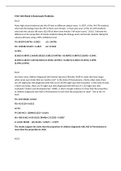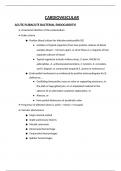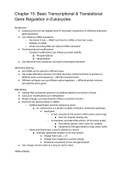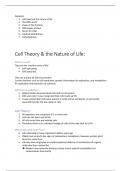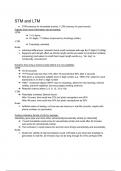CM1009
Giorgia Sisto Stuvia Summaries
Lectures Week 1-8
Tutorial 1-8
Mock exam questions + Summary of main concepts + Flashcards
1. Media as a Social Force
2. Media and Politics
3. Media and Climate Change
4. Media and Humanitarianism
5. Media and the ‘Self’-control Society
6. Media Hacking
7. Media Life
8. Conclusion
Notes via Stuvia, Giorgia Sisto 1
,YELLOW: THEORIES/DEFINITIONS
IMPORTANT PEOPLE
QUESTIONS
Notes via Stuvia, Giorgia Sisto 2
, Media as a Social Force, #1 week
#1.1 LECTURE: Introduction to Mediatization
The quantifiable-self: refers to people who share the interest of self-tracking with technology to gain
“self-knowledge” through numbers.
HEALTH VS. MEDIATIZED HEALTH:
Health → focus on information and illness. Medical treatment and medical care communicated by
experts/ public health.
Mediatized health → big shift in how we understand health. The role of experts diminished in
communication. Health is seen as one’s lifestyle (quantification of the self). This process shows the
individualistic nature of humans.
e.g. Corona is not just about you, it is about the public, other people that might get sick because of you.
Media & Health as institutions
● Health logic/ health resources
● Media logic/ media resources
Mediatization of health: media influences health practices and resources, and media logic is applied to
health.
Mediatization theory: the duality of media as an independent institution and as intertwined with other
institutions. It investigates the complex relations between media and other institutions.
Media is an integrated part of social institutions - and media have grown into an (independent) social
institution.
HISTORICAL DEVELOPMENT: In the past media was used by other institutions, then media became an
institution. Nowadays we have media intertwined with other institutions.
Four types of mediatization processes (Winfried Schulz). Media can:
1. extend human communication
2. substitute activities – face-to-face becomes mediated
3. amalgamate activities – mediated + face-to-face (e.g. online and offline manifestations)
4. force activities to adapt to media’s format
MEDIATED VS. MEDIATIZATION
Mediated: using media to do something (e.g. mediated communication)
Mediatization: how media is changing an activity (e.g. changes in relationships when using media)
Notes via Stuvia, Giorgia Sisto 3
, Media logic
● The rules and codes of media.
● Frame of reference in the production of media culture.
● Visions, conventions, styles & affordances of media.
Before doing any type of analysis of media you first have to understand the logic of media.
Main characteristics:
4S – model: sex, sports, sensation, and scandal; Commercial logic; Short and snappy; Serial & viral;
Private => Public; Rules & affordances - Twitter
Two theories in particular are important to understand the concept of mediatization:
1. Bourdieu - Field Theory: Fields (institutions) are composed of autonomous and heteronomous
poles:
a. autonomous poles – field acts according to its own logic.
b. heteronomous poles – field acts under the influence of other fields.
2. Giddens - Structuration Theory: Structures, formed by rules and resources, are modified by
agents and agents act within the frames of structures.
→
RESULT → Media share resources & rules (logic) with other institutions. Media logic influences the
heteronomous poles. The constant action and sharing may result in a change in institutions.
IMPACT OF MEDIA ON SOCIAL CHANGE AND AS A SOCIAL FORCE? (e.g. anonymous, Arab spring,
Ice bucket challenge, Climate protests)
● Media cause forms of protests and solidarity.
● Those protests/solidarity just exist because of the media.
Key questions to understand Communication as a Social Force:
1. Why do we need a new/different theory of media and social change?
Media are not powerful simply because they are (used) everywhere! It is not just about mediated
practices. Media are powerful because of the ways in which the media are changing institutions and
social structures.
McLuhan → “the medium is the message”
Baudrillard → “The Gulf war did not happen”
2. What are the key characteristics of the theory of mediatization?
Media as an integral part of institutions, but also as an institution with its own logic (influencing other
institutions’ rules, attitudes and practices).
Hjarvard → Dual process (integral part of // independent social institution)
Notes via Stuvia, Giorgia Sisto 4

